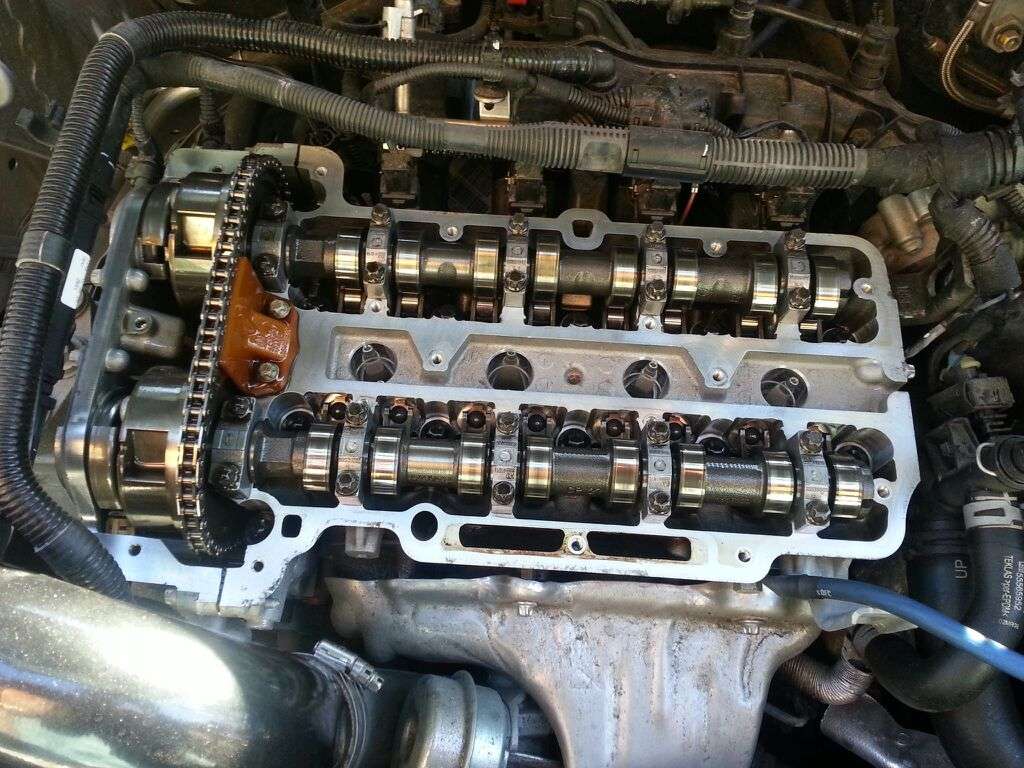How-To: Replace the Valve/Camshaft Cover (1.4L Turbo)
Overview
The valve cover of the 1.4L Turbo engine houses the PCV system. Whether due to a leak in the gasket or a failure in the PCV system, this valve cover may need to be replaced. It is covered under the 5 year, 100,000 mile warranty from GM, but you may choose to perform the service yourself under certain conditions. The valve cover was at one point redesigned due to a high rate of failure. As my dealership is a significant distance away from me, it is more cost-effective given the value of my time to order this part and install it myself. In addition, I like to replace known defective parts ahead of time as preventive maintenance.
The following image compares the primary cosmetic difference between the old design and the new one. The old design is on top, new design is on the bottom. The new design has a ramped vent.
Part Number & Cost
GM part number 25198874 (Camshaft cover with bolt and seal), Available on Amazon.com. The valve cover comes as a kit, which includes gaskets and bolts pre-assembled. You will also need some RTV silicone or engine sealer.
Required Tools
Flathead screwdriver
T-30 torx screwdriver/bit
E-10 socket and ratchet (Available on Amazon.com)
In-lb torque wrench (Available on Amazon.com)
Procedure
The procedure is in fact rather simple, but I will walk you through it step by step.
The first step will be to remove the ignition coil cover. It's that piece of plastic on the top of your engine that "ECOTEC." Once you lift it off, you will see the ignition coil assembly. Remove the two torx screws with a T-30 torx bit/screwdriver.


Once you remove the screws, set them aside in a safe place. You will need to remove the coil assembly. This has to be done carefully as it can break. Do not use a screwdriver. Grab the assembly with two hands as shown, and lift evenly. Apply a very slight see-saw motion as you lift if necessary.


Once you have the coil bar removed, you will need to disconnect it from the wiring harness. To do this, you will need to slide back the connector lock. This will be an orange tab on the connector. Be careful while sliding this out as it can break easily. Once you have slid back the lock, you should be able to press down on the tab to disconnect the connector from the harness. The following image shows the connector with the lock slid back.

On the rear right of the engine, lift the harness out of its seat:


When you reach the left side, you will need to wedge a screwdriver in the snap retainer to free the harness.

Underneath the snap retainer, there is located a plastic vacuum line. Remove this as well. It will simply pop out of its retainer.

On the left side of the cover, lift the harness out of the retainers:

Below the harness, there will be a plastic bar that holds some additional wiring. You will need to use the screwdriver to hold back the retaining clips so you can remove this. It took me a little while to figure out which way to push the tab, but once you have it right, the bar should should lift up and out.

Using an E10 socket, loosen all of the bolts until they can be lifted.


Remove the oil fill cap and dipstick:

























